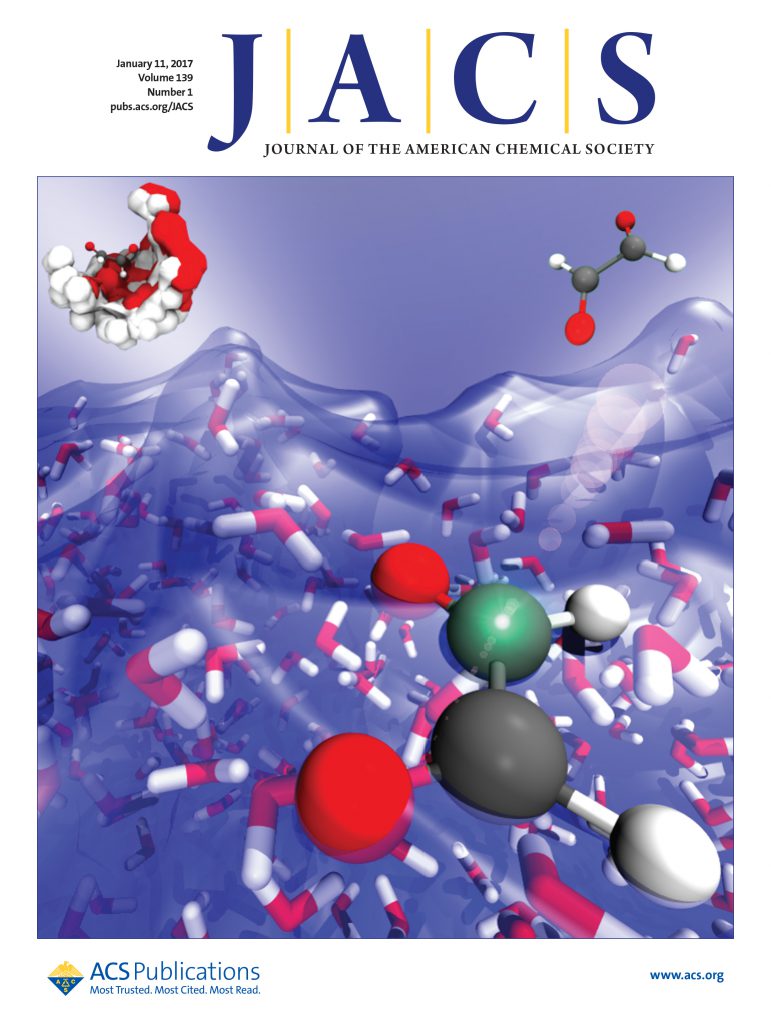Local Ionic Conditions Modulate the Aggregation Propensity and Influence the Structural Polymorphism of α-Synuclein
IF 14.4
1区 化学
Q1 CHEMISTRY, MULTIDISCIPLINARY
引用次数: 0
Abstract
Parkinson’s disease (PD) is linked to the aggregation of the intrinsically disordered protein α-synuclein (aSyn), but the precise triggers and mechanisms driving this process remain unclear. Local environmental factors, such as ion concentrations, can influence aSyn’s conformational ensemble and its tendency to aggregate. In this study, we explore how physiologically relevant ions, mainly Ca2+ and Na+, affect aSyn aggregation, monomer structural dynamics, and fibril polymorphism. ThT fluorescence assays show that all ions speed up aggregation, with Ca2+ having the strongest effect. Using heteronuclear single quantum correlation nuclear magnetic resonance (1H–15N HSQC NMR) spectroscopy, we validate that Ca2+ binds at the C-terminus while Na+ interacts nonspecifically across the sequence. Small-angle neutron scattering (SANS) and hydrogen–deuterium exchange mass spectrometry (HDX-MS) show that Na+ leads to more extended aSyn structures, while Ca2+ results in moderate extension. Molecular dynamics (MD) simulations support this, showing Na+ increases extension between the NAC region and C-terminus, whereas Ca2+ biases the ensemble toward a moderately elongated structure. MD also shows that Ca2+ increases water persistence times in the hydration shell, indicating that aSyn aggregation propensity is due to a combination of conformational bias of the monomer and solvent mobility. Atomic force microscopy (AFM) points toward the formation of distinct fibril polymorphs under different ionic conditions, suggesting ion-induced monomer changes contribute to the diversity of fibril structures. These findings underscore the pivotal influence of the local ionic milieu in shaping the structure and aggregation propensity of aSyn, offering insights into the molecular underpinnings of PD and potential therapeutic strategies targeting aSyn dynamics.

求助全文
约1分钟内获得全文
求助全文
来源期刊
CiteScore
24.40
自引率
6.00%
发文量
2398
审稿时长
1.6 months
期刊介绍:
The flagship journal of the American Chemical Society, known as the Journal of the American Chemical Society (JACS), has been a prestigious publication since its establishment in 1879. It holds a preeminent position in the field of chemistry and related interdisciplinary sciences. JACS is committed to disseminating cutting-edge research papers, covering a wide range of topics, and encompasses approximately 19,000 pages of Articles, Communications, and Perspectives annually. With a weekly publication frequency, JACS plays a vital role in advancing the field of chemistry by providing essential research.

 求助内容:
求助内容: 应助结果提醒方式:
应助结果提醒方式:


